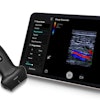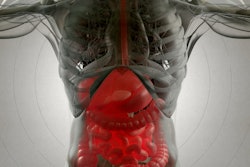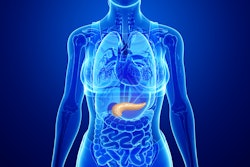A deep-learning method using endoscopic ultrasound images could detect pancreatic neuroendocrine neoplasms, according to research published October 17 in Gastrointestinal Endoscopy.
A team led by Jie-Kun Ni, PhD, from Qilu Hospital of Shandong University in China, found that a convolutional neural network (CNN) named iEUS demonstrated an accuracy like that of expert endoscopic ultrasound users.
“The iEUS precisely diagnosed pancreatic neuroendocrine neoplasms and other confusing pancreatic lesions, thus could assist endosonographers in achieving more accessible and accurate endoscopic diagnoses via endoscopic ultrasound,” Ni and colleagues wrote.
While endoscopic ultrasound is sensitive in detecting pancreatic neuroendocrine neoplasms, the modality is operator-dependent and time-consuming. The researchers noted that these neoplasms mimic normal pancreases and other pancreatic lesions.
CNNs learn directly from visual data that is put into the system. Previous research has explored AI assistance for endoscopic ultrasound, but Ni et al pointed out a lack of data on AI assistance for pancreatic neuroendocrine neoplasms.
The team developed its CNN-based system, iEUS, to identify these neoplasms and multiple types of pancreatic lesions via endoscopic ultrasound. To train iEUS, the researchers used 4,220 images in the training set and 926 images in the validation set. They also combined detection, classification, and segmentation features to boost its diagnostic performance.
Furthermore, the investigators created two CNN models for iEUS. The first one, (CNN1), is a two-category classification model that had image classification and object detection functions. This model focused on detecting neoplasms on ultrasound. The second one, CNN2, is a four-category classification model that had image classification, object detection, and image segmentation functions for diagnosing neuroendocrine neoplasms, pancreatic ductal adenocarcinoma, autoimmune pancreatitis, and cystic neoplasms.
For the study, the team enrolled 573 patients. Both CNN models demonstrated superior accuracy to that of novice endoscopic ultrasound users and comparable to that of intermediate and expert ultrasound users.
| Accuracy of CNN models, ultrasound users in detecting pancreatic neuroendocrine neoplasms | |
|---|---|
| Imaging interpreter | Accuracy |
| CNN1 | 84.2% |
| CNN2 | 88.2% |
| Expert user | 85.5% |
| Intermediate user | 85.5% |
| Novice user | 75.4% |
Also, CNN2 showed an accuracy of 86.2%, 97%, and 97% for diagnosing pancreatic ductal adenocarcinoma, autoimmune pancreatitis, and cystic neoplasms, respectively.
With the assistance of iEUS, the sensitivity of endosonographers at all three levels in diagnosing pancreatic neuroendocrine neoplasms. significantly improved. Sensitivity jumped from 44.8% to 64.6%, from 71.9% to 87.5% for intermediate users, and from 57.6% to 74% for experts, respectively.
The study authors highlighted that iEUS could be used as an assistant for quicker and more accurate decision-making when addressing pancreatic diseases.
“The iEUS shows great potential in promoting [neoplasm] diagnosis of endosonographers in clinical practice, which is expected to be beneficial for improving the outcomes of … patients,” they wrote.
The full study can be found here.



















